How To Repair Masonry Cracks
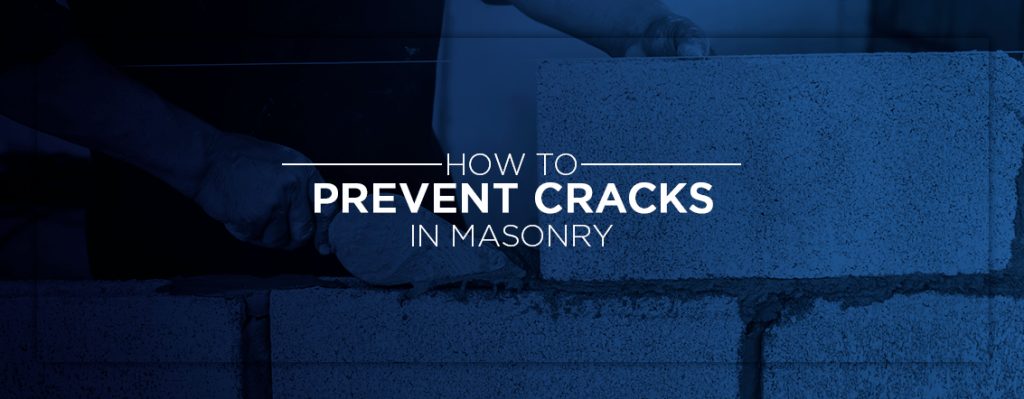
Jump-To:
- What Are Expansion Joints in Masonry?
- Causes of Cracks in Masonry
- Masonry Cleft Prevention
Masonry is sensitive to cracks due to temperature changes, moisture buildup and seismic activeness. While installing expansion joints will conform the natural move of the structure, proper construction and regular inspection will prevent damage to masonry walls and foundations. Use this masonry crevice prevention guide to accept care of your edifice project.
What Are Expansion Joints in Masonry?
An expansion joint is a mid-construction separation that builders install to relieve stress on the masonry materials. Bricks, stones or other masonry materials may fluctuate in size and movement due to temperature changes, excessive wet, harsh atmospheric condition and static or live load deflection. Expansion joints divide masonry to guard against keen from this fluctuation. These joints may be horizontal or vertical, and they provide an opening to allow room for changes in size.
Too expansion joints, the other types of movement structures used in structure include:
- Control joint: This system creates a vertical gap through the masonry blocks that'due south filled with a durable substance to prevent cracks from dry out shrinkage.
- Edifice expansion joint: This set-upwards divides a building into sections and so the burdens experienced in one expanse will non bear upon the overall structural integrity. Typically installed through the building, it is usually more extensive than an expansion or control articulation.
- Construction joint: To bring together interrupted sections of a edifice project, use a construction joint. Yous should ready these structures where they will least impact the structural integrity of the structure.
1. Vertical Joints in Masonry
You lot tin can create a vertical expansion joint using a molded cream pad, a backer rod or a neoprene pad. To meliorate resistance to h2o and air infiltration, y'all could too create a two-phase organisation with a pressure level-equalized or vent structure. A high-quality vertical expansion joint must take some room between the sealants, along with proper ventilation toward the outside wall, to bleed moisture.
The spacing and placement of the vertical expansion joints depend on the cloth and the expectation you lot have for the structure to move. Since the installation of these joints is a technical event that affects the integrity of your projection, the engineer should determine how to set them upwardly.
More often than not, here are some of the locations where they might recommend placing expansion joints:
- Corners: Intersecting walls volition expand and cause distress on one or both sides. To reduce this brunt, install expansion joints near the intersections. While information technology may not exist visually appealing, the ideal place to ready these joints is on either side of the corner. You could also create concealed expansion joints in the inside edges.
- Offsets and setbacks: Walls reverse each other will expand toward an offset, which can either crack the masonry or rotate the shorter leg. Set expansion joints at the beginning to give the walls room to fluctuate in size without knocking into each other.
- Openings: Window and door openings are vulnerable to cracks when the space between 2 expansion joints is besides spacious. More movement takes place in structures with these openings, which tin can result in breaks from the parts of the building that don't move as frequently.
- Junctions: Install expansion joints at the intersections of walls with varying exposures to the elements or weather for support. Masonry exposed to the outdoors will movement differently from masonry that is inside and protected from the elements. An expansion joint should separate the within from the outside if an outside wall extends into a building's interior. You should also install expansion joints to separate next walls or different heights to guard against groovy.
- Parapets: Protective walls exposed in the back may have a much unlike movement trend from the walls below them. These walls too lack the weight of masonry to resist movement. Put vertical expansion joints within parapets, since these walls are vulnerable to more activity than the construction underneath.
two. Horizontal Joints in Masonry
You will need to install horizontal expansion joints if a shelf bending supports the weight of the brick. As an alternative to vertical expansion joints, you lot must place horizontal expansion joints underneath the shelf bending. Before installation, retrieve to remove the temporary shims used to put the edge in position during construction. The articulation will resemble the mortar, so stop it properly to allow greater structural quality and to reduce cracks from weak bricks.
The natural movements of the masonry and frame will decide the required size of the expansion. Consider the surrounding climate and the irrigation systems in place to find out how much space you lot should include in between the joints. The frame volition move as a event of the deflections of the shelf angle, rotating the horizontal leg, and accommodating temperature modify and shrinkage.
If the building you're working on doesn't support construction on shelf angles, an anchor or tie system, then window details and other pathways in the masonry tin can back up the differential movement. These alternatives to shelf angles must allow independent vertical movement between the blocks and the backing, which gives the brick veneer lateral support.
Causes of Cracks in Masonry
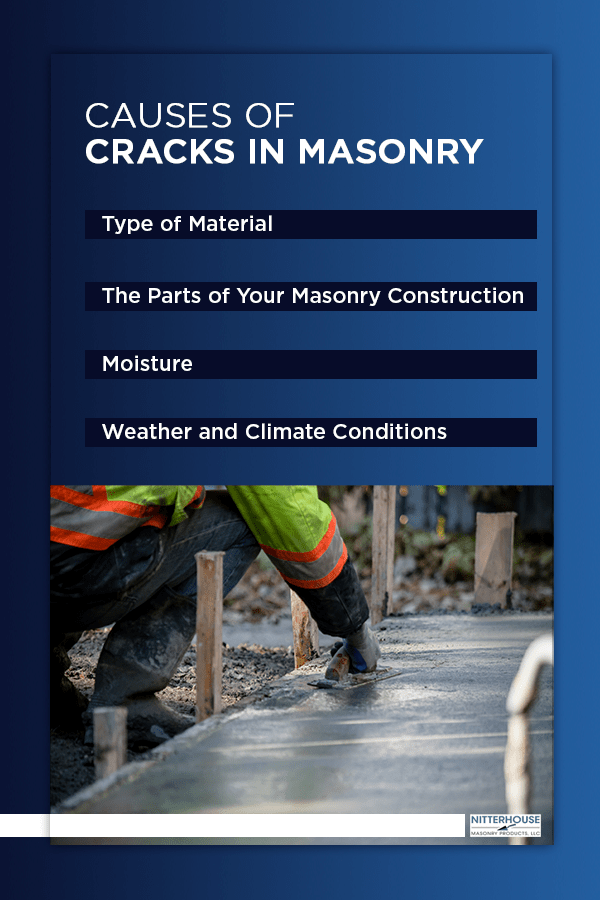
Bully can occur in whatsoever masonry material when the panels can't motility. Besides dry shrinkage, changes in temperature and carbonation, some of the other factors that can also cause harm include:
- The type of textile.
- The installation of the structure.
- Excess moisture buildup.
- Weather and climate conditions.
1. Type of Material
Masonry consists of whatever products made of stone, clay or calcium silicate. The crusade of cracking and the movement characteristics of masonry depends on the specific building material:
- Brick: Dirt materials expand irreversibly later on their production as they absorb water vapor from the air. They also can crack the foundation of the building due to their weight.
- Stucco: While this material is relatively durable, information technology tends to accumulate water on downward slopes on the surface.
- Stone veneer: This masonry material is nearly maintenance-free, nonetheless improper installation could deteriorate the mortar and adhesives within the wall.
Locate A Dealer
ii. The Parts of Your Masonry Construction
Depending on the type of building projection, the multiple parts of your evolution may experience cracks over the years. Inspect the slab and the exterior walls to brand certain that you don't come across cracks or other signs of damage. Your construction project should take a level foundation and should follow the maximum peak requirements, and so you don't place too much pressure on the construction.
Here are some of the standard places where you might notice cracks:
- Brick mortar joints: Yous may detect horizontal or vertical cracks in the brick mortar joints due to sulfate weakening the mortar. These fractures may appear a few years afterward construction, simply you can preclude them by finding out the sulfate content of the masonry materials before you begin edifice.
- Load-bearing walls: Cracks appear below the load-bearing walls because temperature changes cause them to expand or contract. A begetting plaster over the brick wall provides a smooth contact between these walls and the floor.
- Between the joints:Cracks may form between the leading and cross wall due to improper bonding. To adequately create a connection betwixt the walls, leave alternating openings in ane partition to construct the other efficiently.
- Betwixt RCC and masonry: Temperature variation causes differential motion in reinforced concrete columns (RCC) and masonry, thus causing fractures. You can repair these fries by making a groove in the masonry junction and reinforced cavalcade, then applying a sealing compound in the gap.
- Roof slab: High temperatures and UV exposure could crack the foundation of the roof. You could weatherproof the surface over the terrace to prevent harm from extreme heat.
3. Moisture
The presence or absence of moisture in masonry will touch its motion and integrity. One time a porous masonry product sets, it expands as moisture content increases, resulting in the expansion of salts, and shrinks as it dries, resulting in drying shrinkage. Excessive wet could likewise cause corrosion in an iron or steel reinforcement in the walls.
Condensation is a threat to walls and foundations. To maintain the structural integrity of your construction process, you need to practice healthy moisture control habits for masonry. Moisture management consists of various building practices to prevent moisture, including planning proper drainage surrounding the structure.
4. Atmospheric condition and Climate Conditions
The motility of masonry depends on temperature change. Between fluctuations in temperature and variations of wet in the air, the blocks of structure will expand or contract over time. Harsh weather condition conditions and seismic activity could also touch on the motility of your masonry structure.
In the winter, your masonry piece of work is vulnerable to the freeze-thaw process. When water seeps into cracks in the blocks, information technology freezes overnight and expands. This expansion puts stress on the bricks and causes breaks, increasing the size of whatever existing fracture. You can guard against freeze-thaw past using deicing chemicals and applying a sealant.
Masonry Scissure Prevention
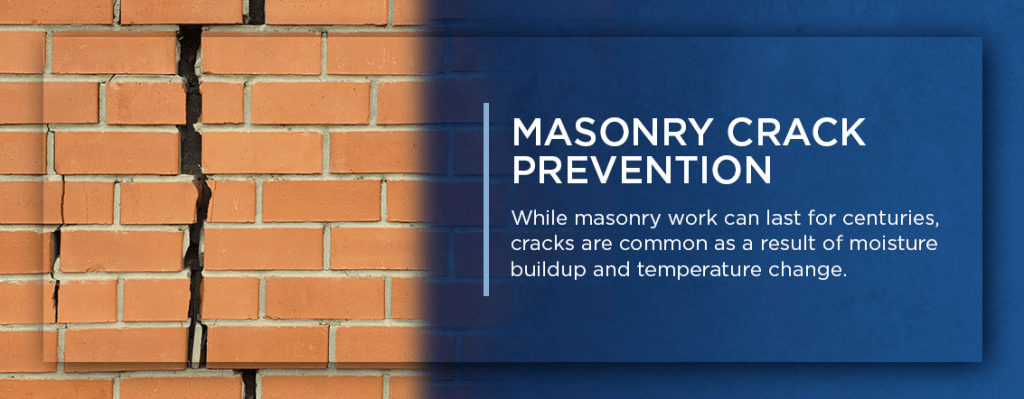
While masonry work can last for centuries, cracks are common equally a issue of wet buildup and temperature modify. Y'all should take these precautions to avoid the deterioration of your structure.
1. Construct Your Masonry Efficiently
Improper masonry installation may outcome in fractures or more than severe foundation problems over several years. Start your new construction project the right way to forestall damage in the future. Continue these tips in mind as you install your mason structure:
- Create a level, plumbed foundation on a clean surface.
- Construct the masonry work at a uniform height throughout all parts of the building to avoid damage to the walls and other structural elements.
- Be enlightened of the maximum summit to construct the construction and then that the walls are stable. Over a sure height, you will need to blueprint a structural barrier to support the other walls.
- The masonry and mortar should properly cure for at least one week.
- Step yourself and only build a few feet of the structure each day.
- Embed your blocks or bricks with mortar that is relatively weaker than the kind used to make the masonry textile.
- Establish an irrigation system to direct water away from the construction.
2. Inspect the Walls and Foundation
Later a severe weather storm or a seismic upshot, inspect the foundation and the outside walls. Effigy out which walls are load-begetting past looking at the beams and joists in the crawl space, attic or basement. Keep in mind the fabric you're working with, whether solid masonry, non-structural brick or stone veneer, to know which signs of deterioration are common.
As you examine the interior and outside walls, along with the foundation, you should note whatever of the following signs:
- Cracks: You may see either stride cracks or vertical corner cracks inside the mortar surrounding your masonry material. Step cracks occur due to the settling of walls, while vertical corner cracks arise when drought-like conditions shrink the soil around and underneath the foundation.
- Bulging or leaning walls:Corrosion from heavy rains draining down the sides of the wall could cause information technology to bulge. Bowing refers to vertical bulging, while sweeping is a term used for the horizontal jutting. Walls may too lean a couple of millimeters, just if the leaning becomes excessive, information technology could be unsafe.
- Compacted bricks: Bricks may condense and cave in on elevation of each other due to sinking or settling foundations.
- Efflorescence: If you detect stains of white table salt eolith, the bricks may have been exposed to an excess amount of moisture. The common salt is residual from the h2o surrounding or infiltrating your building material.
- Mortar deterioration: Efflorescence could be the alert of a more severe issue — the breakdown of the mortar surrounding your building material. To avoid more damage to the building, you should set up a organisation that directs the flow of water abroad from it.
- Steel lintel deflection: Lintels are beams used to construct walls made from masonry, but they could change direction and develop fractures in the bricks or stones considering of corrosion.
- Spalling: Chipping or flaking in the walls is a consequence of improper loss or venting controls, or freeze-thaw weather cycles. While spalling is considered minor damage, yous should fix it before it develops into a more than severe consequence.
three. Accommodate Movement Through Joints
If you utilize various materials, their unlike natural movement could crusade stress throughout the structure. Instead, you should divide the different elements by horizontal or vertical expansion joints or slip panes. Build move joints into the building to accommodate the expansion and contraction of your masonry units.
You should design the sideslip panes to allow parts of the construction to slide to reduce stresses in the bordering materials. Carefully consider both the position and layout of the joints and slip systems and then that these parts can accommodate movements and increase the wall'southward stability. In external walls, seal slip planes and joints to forbid h2o penetration.
Contact Nitterhouse for Masonry Products
Nitterhouse Masonry specializes in veneer stone, Nicrete brick and other masonry products for both residential and commercial construction. If you're looking for masonry materials for your next project, observe a dealer near you that tin can provide you with the right equipment, or browse through our online shop to find what y'all need. For more data, you can contact usa online or call us at 717-267-4500.
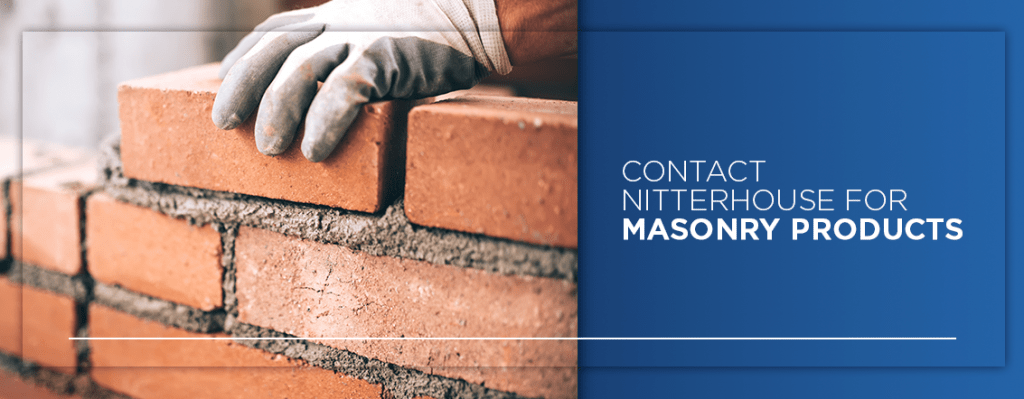
Source: https://www.nitterhousemasonry.com/tips-advice/how-to-prevent-cracks-in-masonry/
Posted by: pittmanwarme1974.blogspot.com

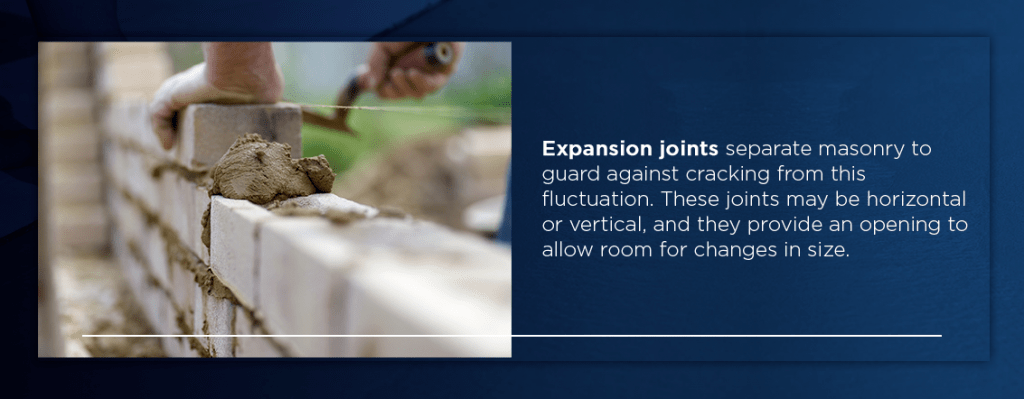

0 Response to "How To Repair Masonry Cracks"
Post a Comment